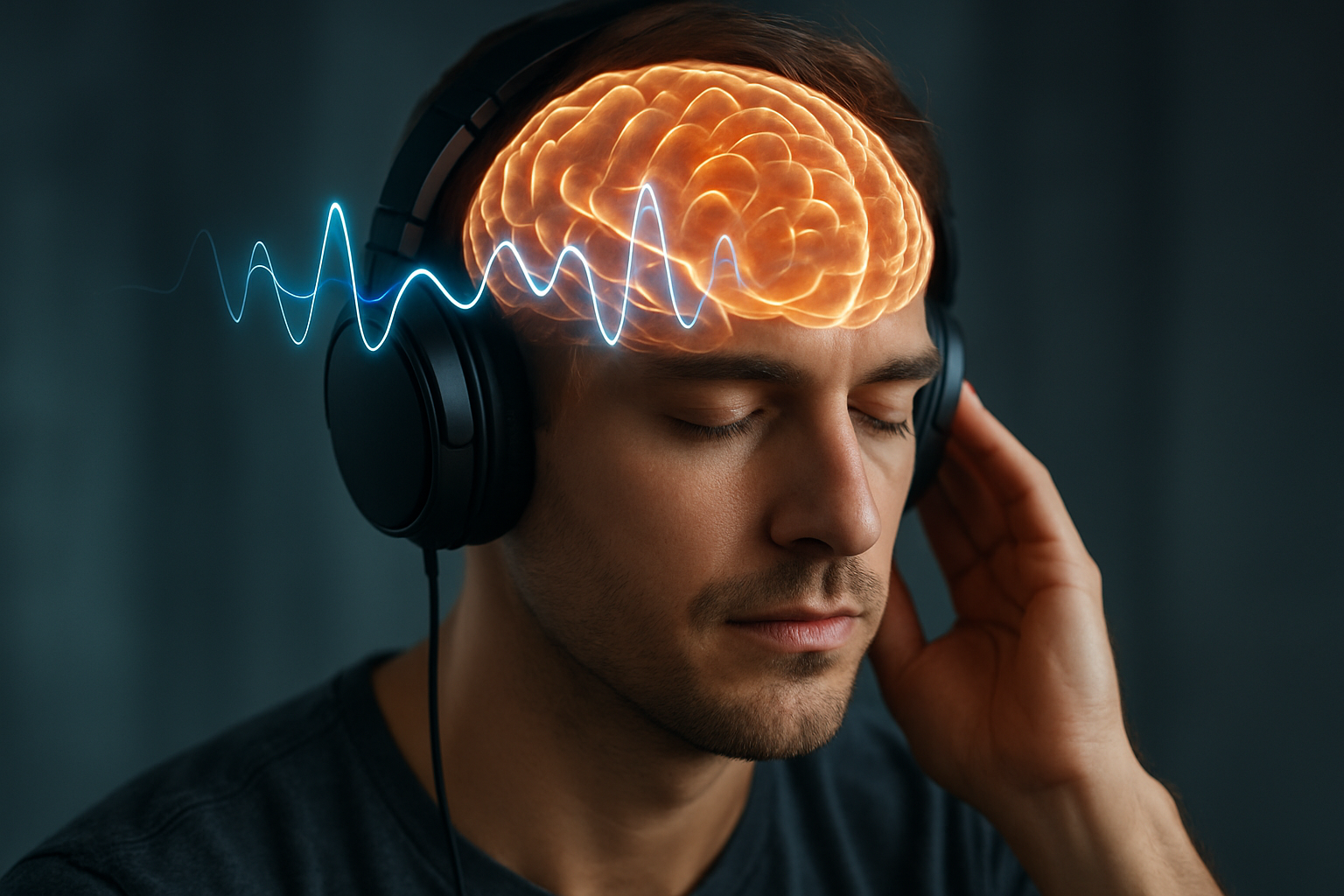Binaural Beats: Tuning Your Brain for Enhanced Well-being
Can sound waves really alter your mental state? Imagine a world where you could improve focus, reduce stress, and even enhance creativity simply by listening to specific audio frequencies. This isn't science fiction—it's the intriguing realm of binaural beats, a fascinating intersection of neuroscience and auditory technology that's gaining traction in wellness circles worldwide.

For example, if a 440 Hz tone is played in one ear and a 444 Hz tone in the other, the brain perceives a 4 Hz beat. This perceived frequency falls within the range of brainwaves associated with various mental states, from deep relaxation to high alertness.
Historical Context and Development
The discovery of binaural beats dates back to 1839 when Heinrich Wilhelm Dove, a Prussian physicist and meteorologist, first described the phenomenon. However, it wasn’t until the late 20th century that researchers began exploring their potential effects on brain function and consciousness.
In the 1970s, biophysicist Gerald Oster published a groundbreaking paper in Scientific American, bringing binaural beats to wider scientific attention. This sparked a surge of interest in their potential applications for altering brainwave patterns and influencing cognitive states.
Brainwave Entrainment and Cognitive Effects
The core principle behind binaural beats is brainwave entrainment—the brain’s tendency to synchronize its electrical activity with external stimuli. Different brainwave frequencies are associated with various mental states:
-
Delta waves (0.5-4 Hz): Deep sleep and healing
-
Theta waves (4-8 Hz): Meditation and creativity
-
Alpha waves (8-13 Hz): Relaxation and light meditation
-
Beta waves (13-30 Hz): Active thinking and focus
-
Gamma waves (30-100 Hz): High-level information processing
Proponents of binaural beats suggest that by listening to audio designed to produce specific frequencies, we can induce corresponding brainwave states and their associated cognitive benefits.
Research and Evidence
While the concept is intriguing, scientific evidence on the efficacy of binaural beats remains mixed. Some studies have shown promising results, while others have found limited or no effects.
A 2019 meta-analysis published in the journal Psychological Research examined 22 studies on binaural beats. The researchers found small but significant effects on attention, memory, anxiety, pain perception, and mood. However, they noted that more rigorous research is needed to draw definitive conclusions.
Another study published in Frontiers in Psychiatry in 2020 found that binaural beat stimulation could potentially enhance sustained attention and working memory performance. The researchers suggested that this technology might have applications in treating attention-deficit disorders.
Potential Applications and Benefits
Despite the need for more research, proponents of binaural beats suggest several potential applications:
-
Stress Reduction: Some users report feeling more relaxed and less anxious after listening to theta or alpha frequency binaural beats.
-
Improved Focus: Beta frequency beats are said to enhance concentration and cognitive performance.
-
Better Sleep: Delta frequency beats may help induce deeper, more restorative sleep.
-
Pain Management: Some studies indicate that certain frequencies might help modulate pain perception.
-
Meditation Enhancement: Theta beats are often used to facilitate deeper meditative states.
Practical Considerations and Usage
If you’re interested in exploring binaural beats, keep these points in mind:
-
Headphones are essential: The effect relies on each ear receiving a different frequency.
-
Start with short sessions: Begin with 15-30 minutes and gradually increase if desired.
-
Be mindful of volume: Keep the audio at a comfortable, moderate level to avoid ear strain.
-
Choose reputable sources: Look for binaural beat tracks from established producers or apps.
-
Avoid while driving: The relaxing or focus-altering effects could be dangerous when operating vehicles.
Tuning In: Quick Facts About Binaural Beats
-
Binaural beats are inaudible above 1000 Hz due to the limitations of brain processing.
-
The effect is strongest with carrier tones between 400-500 Hz.
-
Some people may be more responsive to binaural beats than others.
-
Binaural beats are different from isochronic tones, another form of brainwave entrainment.
-
The placebo effect may play a role in the perceived benefits of binaural beats.
A Sound Conclusion
Binaural beats represent an intriguing intersection of neuroscience, technology, and wellness. While more research is needed to fully understand their effects and potential applications, they offer a unique, non-invasive approach to potentially influencing our mental states.
As we continue to explore the intricate relationship between sound and the brain, binaural beats may emerge as a valuable tool in our quest for enhanced well-being and cognitive performance. Whether you’re seeking better focus, deeper relaxation, or simply curious about this auditory phenomenon, binaural beats offer a harmonious blend of science and self-discovery.





